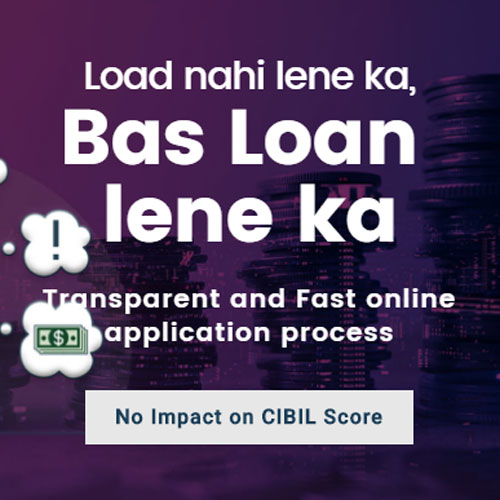Financial inclusion
Financial inclusion is described as the method of offering banking and financial solutions and services to every individual in the society without any form of discrimination. It primarily aims to include everybody in the society by giving them basic financial services without looking at a person’s income or savings. Financial inclusion chiefly focuses on providing reliable financial solutions to the economically underprivileged sections of the society without having any unfair treatment. It intends to provide financial solutions without any signs of inequality. It is also committed to being transparent while offering financial assistance without any hidden transactions or costs.
Financial Inclusion Schemes in India
The Government of India has been introducing several exclusive schemes for the purpose of financial inclusion. These schemes intend to provide social security to the less fortunate sections of the society. After a lot of planning and research by several financial experts and policymakers, the government launched schemes keeping financial inclusion in mind. These schemes have been launched over different years. Let us take a list of the financial inclusion schemes in the country:
- Pradhan Mantri Jan Dhan Yojana (PMJDY)
- Atal Pension Yojana (APY)
- Pradhan Mantri Vaya Vandana Yojana
- Stand Up India Scheme
- Pradhan Mantri Mudra Yojana
- Pradhan Mantri Suraksha Bima Yojana (PMSBY)
- Sukanya Samriddhi Yojana
- Jeevan Suraksha Bandhan Yojana
- Credit Enhancement Guarantee Scheme (CEGS) for Scheduled Castes (SCs)
- Venture Capital Fund for Scheduled Castes under the Social Sector Initiatives
- Varishtha Pension Bima Yojana (VPBY)
Objectives of Financial Inclusion
- Financial inclusion intends to help people secure financial services and products at economical prices such as deposits, fund transfer services, loans, insurance, payment services, etc.
- It aims to establish proper financial institutions to cater to the needs of the poor people. These institutions should have clear-cut regulations and should maintain high standards that are existent in the financial industry.
- Financial inclusion aims to build and maintain financial sustainability so that the less fortunate people have a certainty of funds which they struggle to have.
- Financial inclusion also intends to have numerous institutions that offer affordable financial assistance so that there is sufficient competition so that clients have a lot of options to choose from. There are traditional banking options in the market. However, the number of institutions that offer inexpensive financial products and services is very minimal.
- Financial inclusion intends to increase awareness about the benefits of financial services among the economically underprivileged sections of the society.
- The process of financial inclusion works towards creating financial products that are suitable for the less fortunate people of the society.
- Financial inclusion intends to improve financial literacy and financial awareness in the nation.
- Financial inclusion aims to bring in digital financial solutions for the economically underprivileged people of the nation.
- It also intends to bring in mobile banking or financial services in order to reach the poorest people living in extremely remote areas of the country.
- It aims to provide tailor-made and custom-made financial solutions to poor people as per their individual financial conditions, household needs, preferences, and income levels.
- There are many governmental agencies and non-governmental organisations that are dedicated to bringing in financial inclusion. These agencies are focussed on improving the access to receiving government-approved documents. Many poor people are unable to open bank accounts or apply for a loan as they do not have any identity proof. There are so many people who live in rural areas or tribal villages who do not have knowledge about documents such as PAN, Aadhaar, Driver’s License, or Electoral ID. Hence, they cannot avail many of the services offered by governmental or private institutions. Due to lack of these documents, they are unable to avail any form of subsidies offered by the government that they are actually entitled to.
Goals of Financial Inclusion for Women Empowerment
Financial inclusion is very particular about including women in financial management activities of a household. Financial inclusion believes that women are more capable of handling finances efficiently when compared to men of a house. Hence, financial inclusion activities target women by helping them get started engaging in financial management. There are many houses where women are not permitted to be involved in managing money. They are controlled by the men of the house and are asked to take care of only the domestic chores.
Many conservative people in India believe that women are not capable of handling money. With the help of financial inclusion, the government, as well as non-governmental agencies, intend to get rid of this mentality. Financial inclusion is encouraging women to take up more employment opportunities and be financially independent. It also explains that women will not have to rely on men for money. They also do not have to wait for men’s permission to do anything.
Financial inclusion intends to empower women belonging to low-income groups by increasing financial awareness among them. Women are also taught in simple ways to save their money for future purposes. They are provided with exposure to multiple affordable savings instruments. They are also taught about the various forms of credit available in the market. These forms of credit will help them start up a new small business venture or take up a training course to apply for a new occupation. This will also increase their monthly income.
Financial inclusion is also making many women get mobile phones for their own usage. In several parts of the nation, only men had their own mobile phones and women had to depend on these men. Over the past few years, women have started to own mobile phones and have started to use them for work purposes, business purposes, and financial requirements. Many of them have started to utilise digital modes of payment and other financial operations with the help of mobile phones. This has simplified and quickened their transactions.
Financial Inclusion with the Help of Financial Technology (Fintech)
Financial technology (fintech) refers to the utilisation of advanced technology in the financial industry or the financial sector. With the introduction of financial technology or fintech, financial inclusion is improving extensively across the whole world. India also has many fintech companies that are constantly working towards simplifying the process of providing financial services to prospective clients. Fintech companies have also been successful in offering financial services and products at minimal costs. This is very helpful to customers as their expenses are low and they can distribute their savings to their other needs also.
Financial technology companies are enabling people in rural areas to apply for loans or open bank accounts by using mobile phones. Several people in Indian rural places have mobile phones and some of them have access to mobile internet and hence, they can make use of fintech services to get reliable financial services.
A few of the latest fintech options that are used by individuals include crowdfunding, digital payment systems, peer-to-peer (P2P), electronic wallets, etc. Many people in both rural and urban areas are utilising these advanced options of banking. However, there are still many untouched people who have not had any experience with a banking or any other financial institution. For such people, it is tough to use any mobile-based financial service.
Financial Inclusion through Digital Payment Systems
They can also make payments for products and services in their residential regions with the help of electronic payment wallet systems. The Government of India has launched several electronic wallet systems through smartphone apps such as Bharat Interface for Money (BHIM), Aadhaar Pay, and lots more!
Electronic wallets or e-wallets refer to wallets that can be used with the help of electronic means such as mobile phones. These wallets replace physical wallets. A user can make cashless payments through online as well as offline means. He or she will need to download the e-wallet app on their mobile phone and utilise it to make transactions. These e-wallets can be utilised for mobile recharges, utility bill payments, grocery stores, e-commerce portals, etc.
Many digital financial tools offer attractive offers and discounts when people make use of these tools. These are very helpful and new to the economically underprivileged sections of the society. They can enjoy offers, receive cashback options, and rewards. These incentives will help a user save a lot of money.
Impact of Demonetisation on Financial Inclusion
With the objective of making India completely cashless in a few years, the government has introduced inexpensive e-wallet options so that the less fortunate people of the nation are not excluded from going cashless. These e-wallets have regional languages apart from English. The user can select the language that he or she knows and make use of the app conveniently. Some of these e-wallets not only allow a user to make payments, but also enable them to make fund transfers from one bank account to another.
Many people belonging to low-income groups also started to utilise electronic wallet options as they did not have any other choice. It is true that a lot of them struggled initially due to the demonetisation process. Several middle-class and low-class people were left stranded when the demonetisation process came into effect suddenly. However, the introduction of multiple digital banking and financial services served as a great boon to all economic classes of the society.
Several low-income people, unemployed people (including people who were illiterates) living in both rural and urban areas started to learn about how to open a bank account, how to apply for credit, how to use technology for banking services, how to avail financial services without standing in long lines, and how to carry out transactions without carrying cash in hand.
Financial Inclusion in India through Digitisation of Monetary Transactions
The government of India intends to carry out crores of digital financial transactions for the present and upcoming years with the help of Unified Payment Interface (UPI), Unstructured Supplementary Service Data (USSD) banking methods, Immediate Payment Service (IMPS), National Electronic Funds Transfer (NEFT), Aadhaar Pay, debit cards, BHIM, and credit cards.
Moreover, the government wants to make it compulsory for fertiliser depots, block offices, petrol pumps, road transport offices, hospitals, colleges, universities, etc. to make arrangements for accepting payments for services and products through digital payment systems. It makes a lot of sense especially when customers are required to make high-value payments at these institutions or offices. The government intends to achieve this by issuing a mandate to the above-mentioned institutions.
Apart from this, the government also wants to make it mandatory that every government receipt is offered exclusively through any digital mode. Presently, many government operations are carried out digitally and customers receive receipts for payments in the digital form. However, this has not been completely effective in every part of the nation. To attract more and more users for digital modes of payment, the government is trying its best to remove or reduce service charges that are levied by companies on the electronic transactions.
These digital financial apps will help in eliminating corruption apart from achieving financial inclusion. These apps aim to attain financial inclusion by offering interesting and attractive bonuses for both users and merchants. Customers who make use of these cashless payment tools will be able to enjoy referral bonus schemes and meanwhile, merchants will get cashback rewards and points when they allow customers to transact through these cashless systems.
Apart from introducing digital financial systems to the poor people, a few banks have released mobile banking vans or trucks to reach the interior parts or untouched parts of the country. In these parts, people do not have access to transport, communication, or financial services.
Along with the government-owned payment apps, there are many private mobile electronic wallet (e-wallet) systems created by private companies and banks. Most of these apps allow bank fund transfers. All these e-wallets enable users to make payments digitally in a convenient manner. Individuals will not get stranded anywhere even if they are out of cash in hand. If they have money in their electronic wallet, they are safe and can carry out financial transactions successfully without having to rely on others for money. Most of these apps are available on Android and iOS smartphones. There are also some apps that are available on phones that operate through Windows.
One of the leading e-wallets in India is Paytm. It is available on Android, Blackberry, iOS, Ovi, Windows, etc. Some of the other prominent e-wallet apps include Freecharge, MobiKwik, Citrus Wallet, Oxigen Wallet, ItzCash, Airtel Money, Axis Bank Lime, Jio Money, ICICI Pockets, HDFC PayZapp, SBI Buddy, mRupee, Vodafone M-Pesa, PayMate, PayUmoney, Juspay, Ezetap, Citi MasterPass, MomoeXpress, Ola Money, Mswipe, etc.
What is the Need for Financial Inclusion?
Financial inclusion enhances the financial system of the country comprehensively. It strengthens the availability of economic resources. Most importantly, it toughens the concept of savings among poor people living in both urban and rural areas. This way, it contributes towards the progress of the economy in a consistent manner.
Many poor people tend to get cheated and sometimes even exploited by rich landlords as well as unlicensed moneylenders due to the vulnerable condition of the poor people. With the help of financial inclusion, this serious and hazardous situation can be changed.
Financial inclusion engages in including poor people in the formal banking industry with the intention of securing their minimal finances for future purposes. There are many households with people who are farmers or artisans who do not have proper facilities to save the money that they earn after putting in so much effort.
Financial Inclusion Programmes Organised by the Reserve Bank of India (RBI)
The Reserve Bank of India works on exclusive programmes and plans in order to have financial inclusion in the nation effectively. It applies a bank-led strategy in order to attain financial inclusion smoothly. The central bank of India also has firm regulations in place that need to be followed by every bank. The RBI also is offering qualified assistance to every bank in the nation in order to attain its financial inclusion objectives.
Let us take a look at some of the programmes introduced by the RBI in order to achieve its goals:
- The RBI instructed every bank to have Basic Saving Bank Deposits (BDSD) accounts for the economically weaker sections of the society. These are no-frill accounts where account holders do not have to maintain any minimum balance or minimum deposit. These account holders can withdraw cash at any ATM or at the bank branch. They should also be given the opportunity to make use of electronic payment channels for receiving and transferring money to others.
- The RBI also asked banks to have simple Know Your Client (KYC) regulations for the less fortunate people of the society. There are many people in rural areas who are unable to open bank accounts due to strict KYC norms. Hence, the RBI wants banks to have simplified KYC requirements particularly if a low-income individual is interested in opening a bank account with an amount not above Rs.50,000. It also wants minimal KYC norms if the overall credit in the accounts does not go above Rs.1 lakh for 1 year. Recently, banks have been asked to accept Aadhaar Card as identity proof as well as address proof since most people belonging to low-income groups have made Aadhaar card in their names.
- Keeping in mind about the lack of bank branches in rural areas, the RBI has asked all banking institutions to open more and more branches in villages across the nation in order to provide good banking services to the villagers. There are many remote villages where there are no banks and also no good transportation services. It is very difficult for residents of these areas to commute to a far-off bank branch for availing banking services. Hence, with the compulsory rule of the RBI, banks are distributing the ratio of banks in villages and cities to have a balance.
Operations of Financial Inclusion
Under financial inclusion, the main aspect is access to financial sources. This can be broadly divided into credit, wealth creation, and contingency planning.
- According to the concept of financial inclusion, under the credit aspect, a low-income individual needs proper access to emergency loans, consumer loans, housing loans, and business livelihood loans at affordable rates.
- Under the wealth creation aspect, a poor individual should be able to make excellent savings and have access to reliable investment options that generate good returns. Every low-income household should also have basic financial literacy and understand the concept of risk in finance clearly.
- Under the contingency planning segment of the financial inclusion system, a poor person should have access to funds that can be utilised exclusively in the future. It is not enough if these people have only means to improve their income and enhance their lifestyle. They should also have the right resources to be prepared for the future, especially when they get old. Many of the poor people may not be aware of retirement plans. They should be provided with affordable retirement plans that will give them good returns in the later stages of their lives.
They should also be given insurable contingencies to keep themselves safe and secure. Many less fortunate people do not even think of taking a life insurance policy or a vehicle insurance policy due to the high costs involved. Insurers should offer insurance options at subsidised premiums to the economically weaker sections. These insurance policies will give them coverage and prevent them from paying exorbitant compensation costs when something unforeseen or unfortunate happens to them or their family.
They should also be given buffer savings in order to be prepared and ready for unforeseen or emergency expenses. This way, they would not have to go to their relatives or friends or moneylenders for monetary support. They can be financially ready always.
The Reserve Bank of India is promoting the establishment of Financial Literacy Centres (FLCs). It has made many modifications and revisions regarding the functioning of Financial Literacy Centres (FLCs). The rural branches of various scheduled commercial banks and financial literacy centres are now required to improve financial awareness on a larger scale and enhance their financial literacy activities by organising catchy and simple financial literacy camps. These camps can be held outdoors under a tree or in some other open space by having financial awareness camps on a monthly basis or more frequently. Financial literacy camps work towards imparting financial literacy and offering convenient financial access to low-income people of the society.
With the objective of distributing the branches of scheduled commercial banks (SCBs), the RBI has instructed banks to establish their branches in Tier 2 to Tier 6 centres that have less than 1 lakh people. These branches can be opened with a general permission from the RBI. In Sikkim and North-Eastern states, scheduled commercial banks can set up branches without even getting any approval from the RBI. They are free to open any branch in these states. The RBI is also working to liberalise the functioning of commercial banks apart from regional rural banks (RRBs) so they can open branches in Tier 1 centres with a general permission.
The central bank of the nation also asked banks to discuss and create Financial Inclusion Plans (FIPs). These plans will include details about staff employed, branches opened, facilities offered in each of these branches, steps being taken to convert the unbanked sections of the society to individuals with basic access to banking services, etc. The plan will also include information about no-frills accounts opened with each public or private bank. The RBI has been checking each bank’s FIP with full dedication and providing them with constructive feedback.
The RBI has also asked banks to set up intermediate brick and mortar structures between the base branch of a bank and the other branch locations. This should be done for the purpose of organising and administering cash, redressing customers’ grievances, collecting and maintaining mandatory documents systematically, monitoring of branch activities, etc. This particular intermediate branch can be an inexpensive building with simple infrastructure, passbook printers, banking terminal, cash retention machines or safes for storing large amounts of cash.
The Reserve Bank of India enabled scheduled commercial banks to get business correspondents (BCs) as well as business facilitators (BF). These BCs and BFs will play the role of intermediaries for the purpose of offering banking services to customers across the nation. The business correspondent strategy promotes delivery of banking products at the doorstep of the customers. They also offer cash transactions and hence, this makes it easier for people who live in rural areas where there are not too many banking branches and not proper modes of transport for them to commute to nearby towns or cities.
In the rural setting, business correspondents typically take assistance from the Village Panchayat (the local governing body of a particular village) and develop a strong system consisting of Common Service Centres (CSCs). A Common Service Centre is an electronic hub that functions in rural areas. This centre will have a computer and it will be connected to the internet. This system will offer electronic business services as well as e-governance to people living in rural areas. It also serves as an opportunity to rural people for being innovative and smart. People can come up with unique ideas and technological solutions for the purpose of creating and improving business operations, marketing activities, and increasing sales on a regular basis.
Financial Inclusion in India
In the Indian subcontinent, the concept of financial inclusion was first familiarised in the year 2005 by the Reserve Bank of India by releasing the Annual Policy Statement. Soon, the concept started to spread in every part of the nation. It was chiefly introduced to touch every corner of the country without ignoring any remote area. The concept addressed the absence of a formal financial system and banking system for catering to the monetary requirements of the poor people.
In the year 2005, the Khan Committee Report was released which mainly discussed rural credit and microfinance. It spoke about how many people in the nation are missing out on the benefits of a professional and licensed banking system.
The Indian government also initiated the ‘Pradhan Mantri Jan Dhan Yojna’ with the sole purpose of motivating and encouraging poor individuals to open bank accounts. This programme targeted at least 75 million individuals to open bank accounts by the year 2015.
Chief Aspects of an Integral Financial Integral Strategy
Every country has a financial integral strategy in order to build its financial sector comprehensively and sustain its condition consistently for several years. The strategy also works towards strengthening the financial system of the economy whenever there are fluctuations in the financial market.
The 3 main elements of an integral financial strategy are financial literacy or education, financial stability, and financial inclusion.
Financial literacy or education refers to spreading awareness and knowledge about financial services that are given by banks and other financial institutions. Financial inclusion refers to the provision of proper access to multiple financial services equally to all economic classes of the society. Therefore, this indicates that financial literacy takes care of the demand angle by increasing financial knowledge among people. On the other hand, financial inclusion handles the supply angle by making sure that financial services are supplied to end users. These 2 elements help in building financial stability.
There is a financial tripod in financing terms where these 3 elements form a triangle and this triangle shows how each element works towards toughening the financial sector of an economy.
Special Financial Products Offered for Attaining Financial Inclusion
Keeping in mind that low-income people living in rural and urban areas have very limited access to financial products and services, scheduled commercial banks (SCBs) have been asked by the Reserve Bank of India to design and offer exclusive financial products to the economically weaker sections of the society. Many of them are only aware of basic financial services such as savings schemes, savings accounts, personal loans, crop loans, microfinance, etc. They do not know anything about credit cards or debit cards.
However, due to their lack of access to instant credit facilities, banks were instructed to issue cost-efficient credit cards to the low-income groups of the society. Some of the special financial products provided to them include:
- General Credit Cards (GCC): Banks were asked by the RBI to launch and offer General Credit Card facilities with an amount of up to Rs.25,000 at their branches located in semi-urban and rural areas.
- Kissan Credit Cards (KCC): The Reserve Bank of India also instructed banks to provide Kissan Credit Cards exclusively to small farmers who earn very low incomes and who have very limited funds due to which they cannot invest in proper farming tools, fertilisers, pesticides, crop seeds, tractors, land for farming, storage warehouses, etc. They are forced to rely on other wealthy landlords for getting land to sow crops. These Kissan Credit Cards are intended to help farmers make instant purchases whenever required. Many a time, farmers give up on purchasing things required for their occupation due to lack of funds.
- ICT-Based Accounts via BCs: The Reserve Bank also devised a plan to help banks to reach out to the unbanked individuals of the society by offering information and communications technology (ICT)-based bank accounts with the help of business correspondents (BCs). These accounts allow users to make withdrawals of cash, create deposits, and apply for loans and other forms of credit through electronic forms. This type of account makes banking inexpensive and simple.
- Increase in ATMs: The Reserve Bank of India also reported that many rural parts of the nation do not have enough automated teller machines (ATMs) and this is hampering many buying and selling operations of the people residing in those areas. In order to increase the availability of physical cash for these people, the number of ATMs increased massively.
Financial Inclusion through Microfinance
Microfinance is a very effective way of offering funds to the economically underprivileged sections of the society. Microfinance refers to giving microloans or microcredit to the less fortunate entrepreneurs and small-scale business enterprises. This mode of financing has helped India extensively in achieving financial inclusion in a cost-effective manner. It has impacted the lives of the poorest people in the nation. It includes the provision of loans, savings instruments, and other financial instruments for the purpose of making more money and saving it proficiently for multiple purposes.
Financial Inclusion with the Help of Private Companies
Private companies have also initiated programmes in order to contribute towards achieving financial inclusion in the nation. These private companies planned and implemented projects in order to make the low-income groups of people be engaged in developmental projects.
Some of these programmes include Haryali Kisan Bazaar by DCM, EChoupal or E- Sagar by ITC, Project Shakti by Hindustan Unilever, and many more.
Over the past few years, financial inclusion has become a very prominent public policy aspect in order to develop the economy in a sustainable manner. It plays a significant role in keeping institutions that provide finance in a very steady and firm condition. Banks can enjoy excellent stability when financial inclusion is attained.





